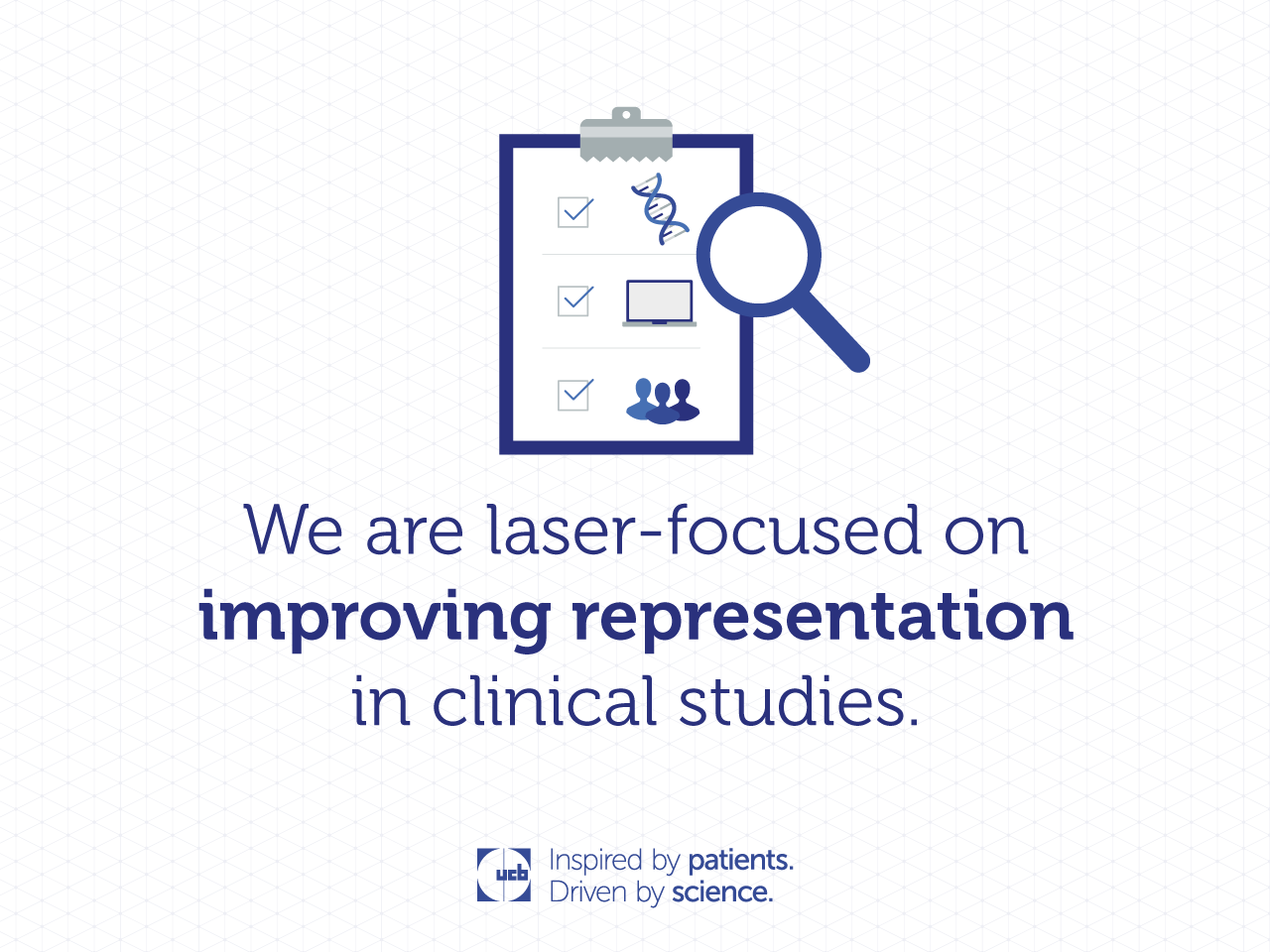
Kim Doggett, Head of Site Engagement, was recently quoted in the Wall Street Journal discussing UCB's work to bridge the gaps of diversity in clinical trials. The article referenced UCB approaches that include decentralized clinical trials (DCTs), digital tools, and new methods to reach underserved patients.
Using DCTs provides the opportunity to make our clinical trials both more accessible and easier to participate in for patients and help reach patients living with specific disease states in underrepresented geographies. DCTs are changing how we approach the design of our trials by focusing on reducing overall in-person patient visits and increasing remote-friendly visits. Across our portfolio, UCB has approximately 14% of active studies in the DCT model, with more than half of those study visits being fully remote. We’re hopeful approaches like DCTs can help ensure access to studies for a broader range of participants by removing barriers such as distance, transportation, and time required.
In addition to DCTs, we have leveraged digital business transformation by introducing several technological and digital tools that are helping to improve representation in trials. Examples include eConsent, ePROs (patient-reported outcomes), and a proprietary app for our trial participants called myUCB. MyUCB, our internally developed remote data capture and patient-centric digital platform, married with our DCT efforts, allows for greater access to new and diverse patient populations.
To further enhance the patient experience, team members from GCSO (Global Clinical Sciences and Operations) collaborated to pilot a new role, a Community Engagement Partner (CEP) concept, in the African American/Black community to connect UCB and sites (physicians and staff) to local communities that may be impacted by lupus. Recruiting participants from diverse backgrounds is particularly important for clinical trials involving diseases like lupus that disproportionately affect specific racial and ethnic populations. The goal of the CEP is to establish a footprint in the diversity landscape, influence and improve recruitment efforts, and address the retention of diverse patient groups. By bridging the gap between communities and science, we aim to build long-lasting relationships with community leaders and local organizations focused on serving underrepresented communities.
Finally, as a member of PhRMA, we are committed to the industry’s principles on Clinical Trial Diversity. By considering the needs of diverse populations through deep patient listening and insights and broadening eligibility criteria for enrollment when scientifically and clinically appropriate, we can continue to improve representation in clinical studies.
We are committed to continuing the work to identify best practices around key drivers such as scientific rigor, informing innovation, and addressing health inequities in clinical trials now and into the future.
Choose Country
- Global Site – English
- Australia – English
- België – Engels
- Belgique – Anglais
- Brasil – Português
- България – Български
- Canada – English
- Canada – Français
- 中国 – 中文
- Česká Republika – Angličtina
- Danmark – Engelsk
- Deutschland – Deutsch
- France – Français
- España – Español
- Ελλάδα – Ελληνικά
- India – English
- Ireland – English
- Italia – Inglese
- 日本 – 日本語
- Казахстан – ағылшын тілі
- 한국 – 한국어
- Luxembourg – Anglais
- Luxemburg – Engels
- Magyarország – Angol
- México & Latinoamérica – Español
- Nederland – Engels
- New Zeeland – English
- Norge – Engelsk
- Österreich – Deutsch
- Polska – Polski
- Portugal – Inglês
- România – Engleză
- Россия – Русский
- Slovensko – Anglický
- Suomi – Englanti
- Sverige – Engelska
- Schweiz – Deutsch
- Suisse – Français
- Türkiye – Türkçe
- Україна – Англійська
- United Kingdom – English
- U.S.A. – English


